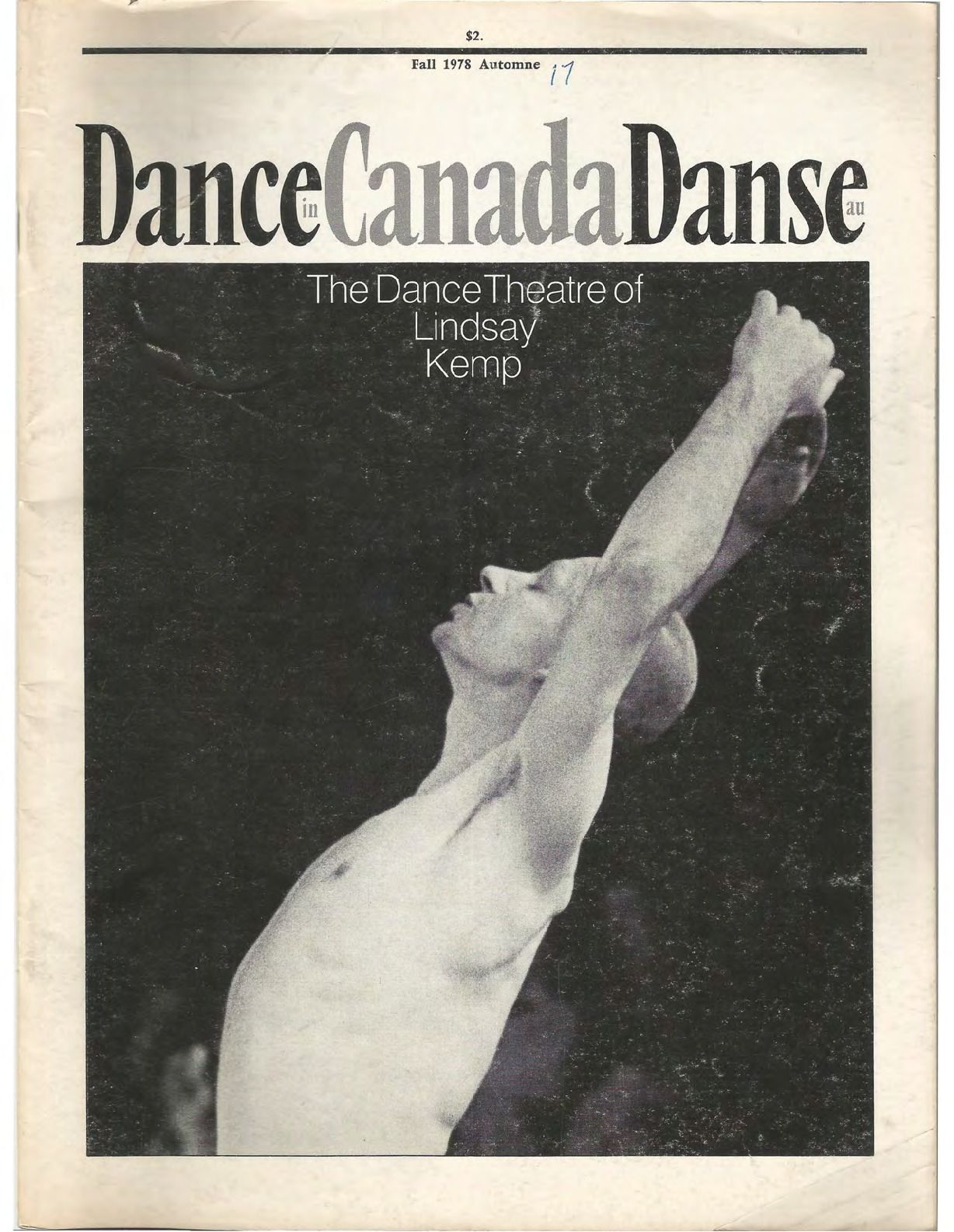Dance in Canada Magazine Number 17, Fall 1978
Added 30th Apr 2021 by Beth Dobson (Archives and Programming Assistant, DCD) / Last update 8th Mar 2022
The description of this Item
Contains the following articles:
- The Dance Theatre of Lindsay Kemp by Graham Jackson
- The Month of the Long Days: The First Canadian Choreographic Seminar: A Diary by Elizabeth Zimmer
- Choreography: A Modest Proposal by Jock Abra
- Training the Dancer V: Turnout by Rhonda Ryman
- In Review
-Noticeboard
The collections that this item appears in.
Tag descriptions added by humans
Choreography
Vancouver
Jock Abra
Modern Dance
Michael Crabb
Andrew Oxenham
Elizabeth Zimmer
Penelope Doob
Selma Landen Odom
Lawrence Adams
Miriam Adams
Romeo and Juliet
Alicia Alonso
National Ballet of Cuba
Lauretta Thistle
Men and Dance
Andra Smith
Graham Jackson
John Butler
Mary Fraker
Oscar Araiz
Jean A. Chalmers Award in Choreography
Robert Desrosiers
Rhonda Ryman
Marijan Bayer
Karen Jamieson
Karen Rimmer
Echoes
American Ballet Theatre
Holly Small
Martha Graham
Kinesiology
Kati Vita
Leland Windreich
Carlos Miranda
Linda Rabin
David Vaughan
Reciprocal Innervation
Louis Robitaille
Clifford E. Lee Choreography Award
Ian Gibson
Lindsay Kemp
Flowers
Robert Cohan
Adam Gatehouse
Jennifer Mascall
Frederick Ashton
Joseph H. Mazo
Beryl Grey
David Gillard
Charles Payne
Anton Dolin
Lyn Roewade
Lise Bernier
Kathryn Brownell
Gary Wahl
Shinju
San Francisco Ballet
Jorge Esquivel
Angele Dagenais
Ballet Nacional de Cuba
Ricardo Abreut
Ace Buddies
Christopher Bannerman
Mimi Beck
Chantal Belhumeur
Lucia Chase
City Ballet of Toronto
Lew Christensen
La Compagnie de Danse Jo Lechay
Dansepartout
Malcolm Forsyth
Le Groupe Nouvelle Aire
Marine Heppner
The House
Doris Humphrey
Judith Miller
Meredith Monk
Tomm Ruud
Michael Smuin
Eddy Toussaint
Metamorphosis
Watch Me Dance You Bastards
Preludes
Betrothal
Concerto
Pavane
Gems
Renderings
Maxine Heppner
Absinthe
Cradling
Round Dance
Plateau
Raw Recital
Tablet
Women of the Tent
Trilogy
Robyn Simpson
I Remember What's-His-Face
Songs of Mahler
Cantate
Reflexions
Choreographers
National Choreographic Conference
Benesh Notation
Turnout Technique
Description of the objects in this Item
01/10/1978
Magazine
Dance in Canada Magazine Number 17, Fall 1978
Dance Collection Danse
DCD's accession number for this Item. It is the unique identifier.
Auto-generated content
Tag descriptions added automatically
Auto-generated identification of objects in this Item
An autogenerated description of this Item
Auto-generated number of faces in the Item

